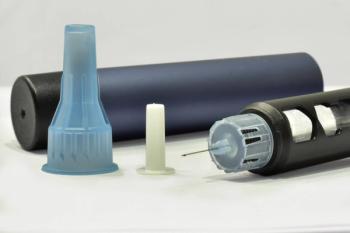
Many US Adults Remain Unaware of Available Pharmacy Services
Rite Aid recently released a survey detailing US patients’ perspective of how they engage with their pharmacists.
The pharmacy services most US adults are familiar with are dispensing medication, over-the-counter product guidance, health and wellness advice, and immunizations, according to a Rite Aid survey.1 However, the same population was significantly unaware of pharmacy services available in communities all around the country, including medication therapy management (MTM), point-of-care testing, smoking cessation programs, and so much more.
“As industry research shows, many consumers visit their pharmacist far more frequently than their health care provider as patient appointments can take weeks to secure,” said Karen Staniforth, BPharm, Chief Pharmacy Officer at Rite Aid. “Over the years, I’ve seen firsthand the positive impact personalized pharmacist-consumer relationships can have on health outcomes.”
To get a better understanding of consumer-pharmacist engagement, Rite Aid conducted a survey including a total of 2000 US adults; responses were recorded between December 9 and 10, 2024. Survey prompts asked respondents a series of questions that attempted to better understand the public’s feelings toward pharmacists. Survey questions highlighted 3 key areas: relationships between consumers and pharmacists, pharmacist services within a practice setting, and the pharmacist’s overall role within health care.
“Pharmacists can speak to and advise on many aspects of an individual’s health, from medication management, testing for flu and strep, and travel health consultations, to prescribing certain medications in select states,” continued Staniforth.1 “Despite their accessibility in the community, we’re seeing a gap in how consumers are utilizing their pharmacy or pharmacist to their full capabilities.”
Over 50% of survey respondents said they were familiar with pharmacists’ ability to dispense medication (72%), offer over-the-counter product counseling (64%), give vaccines (53%), and provide health and wellness advice (53%). However, only 30% or less of all participants were aware that pharmacists could prescribe specific medications in certain states (30%), provide MTM services (27%), conduct point-of-care testing (23%), and offer smoking cessation programs (24%).
Aside from general pharmacy services, 55% of respondents believed that pharmacists can assist with minor health care concerns outside of their expertise in medications. However, participants’ knowledge of pharmacists’ scope within health care is lacking, with only 29% being aware of sexual health pharmacy services and 26% aware of women’s health services.
“[The survey] found that 62% of respondents view their pharmacist as a crucial part of their health and wellness care team,” wrote authors of the report.1 “Yet, many respondents remain unaware of the full range of services that pharmacists can offer to support an individual’s health.”
Moving away from well-known or unfamiliar pharmacy services, the survey also focused on patient-pharmacist engagement and consumer’s feelings and comfortability with their local or community pharmacists. Among the 62% of respondents who claimed pharmacists are pivotal to health and wellness, about 75% did not have a personal relationship with a pharmacist.
“Additionally, many aren’t connecting with their pharmacy to discuss precautions for their medication and supplement intake. Of the respondents, 68% take more than one medication and/or supplement, but only 46% reported they have discussed potential interactions or side effects with their pharmacist,” they continued.
Finally, one of the more eye-opening findings from the survey included a generational gap in feelings toward pharmacists, pharmacies, and their services. According to survey responses, younger consumers are visiting their pharmacies for prescriptions more than older individuals. Indeed, Gen Z participants (29%) said they visit their pharmacist the most, followed by millennials (25%), Gen X (20%), and Baby Boomers (12%).
“Patients generally know the duties pharmacists can perform compared [with] duties of technicians, but they incorrectly believe that physicians have more years of drug education than do pharmacists. Patients who have more positive attitudes toward pharmacists versus doctors are more likely to initiate interactions with pharmacists,” wrote authors of a study published in the American Journal of Health-System Pharmacy.1
When it comes to patient-pharmacist relationships—more importantly, how patients view their pharmacists—knowledge is key. If patients become more familiar and knowledgeable of pharmacist services and expertise, a larger portion of the population will seek out pharmacy services when they previously would not have. The more familiar patients are with their chances to seek care, the more they will take advantage of available services.
“The results show that the role of pharmacists is underutilized and also widely unknown,” concluded Staniforth.1
Are you ready to elevate your pharmacy practice? Sign up today for our
Reference
1. New survey from Rite Aid reveals gaps in consumer awareness and utilization of pharmacist expertise. News Release. Rite Aid. January 9, 2025. Accessed January 10, 2025. https://www.businesswire.com/news/home/20250108378004/en/New-Survey-from-Rite-Aid-Reveals-Gaps-in-Consumer-Awareness-and-Utilization-of-Pharmacist-Expertise
2. Perrault EK, Beal JL. Patients' knowledge about pharmacists, technicians, and physicians. Am J Health Syst Pharm. 2019;76(18):1420-1425. doi:10.1093/ajhp/zxz169
Newsletter
Pharmacy practice is always changing. Stay ahead of the curve with the Drug Topics newsletter and get the latest drug information, industry trends, and patient care tips.













































































































































